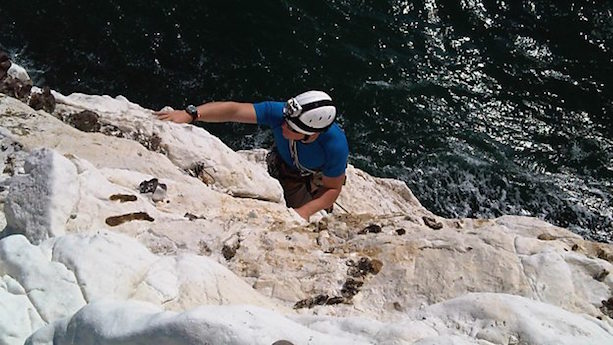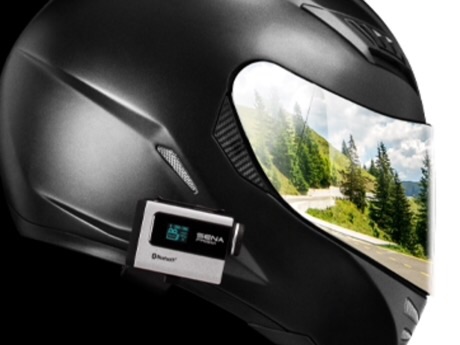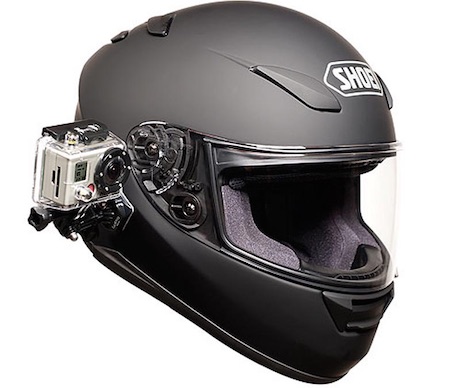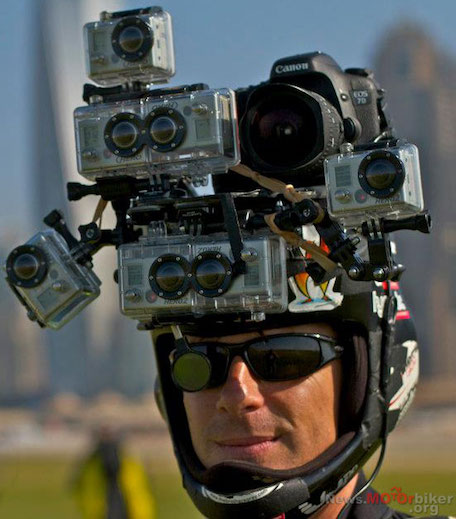Helmet cameras may not be the safety risk in a crash that has previously been suggested.
The BBC and UK Transport Research Laboratory (TRL) have performed impact tests on climbing helmets with cameras attached and found they didn’t increase the risk in a crash.
They say that their test results may transfer to other types of helmets, such as motorcycles.

In Australia, police in some states have been fining riders for wearing cameras on helmets claiming they are a safety risk and contravene the Australian Standards which does not allow any helmet modifications.
The latter issue has been disputed by experts as a misreading of the rules and that so long as holes are not drilled in the helmet, sticking a mount for a camera or Bluetooth unit should be legal.
Impact tests on motorcycle helmets with cameras attached have been performed in NSW, but the results have so far not been released.
Australian Motorcycle Council spokesman Guy Stanford says no only “selective facts” have been leaked to them.
“At this stage we have assertions, no hard evidence and a side-dressing of biased opinion,” he says.
“We’re also waiting for the ACCC to respond to an AMC complaint in the same area.
“The whole affair reminds me of a bunch of blokes standing around a bike making weird engine noises and speculating as to the cause of the noise, with guesswork from a little bit of knowledge but little understanding. The discussion frightened the poor owner into seeing his entire bank balance flash before his eyes, with the dread of having to sell his bike for next to nothing or pay an enormous repair bill. Turned out he had a small rock caught up in the fairing belly pan.
“Fears disappear when the facts become known.”

Longtime Helmet camopaigjner Wayne Carruthers says NSW authorities have a “paternalistic tendency”, rather than being open and transparent.
“They only release what they want us to hear and not the full information to enable the public to make up their own mind on issues based on the full facts,” he says.
Meanwhile, the BBC study was initiated because of the increasing use of helmet cameras in their TV productions and Michael Schumacher’s accident in 2013 in which the mini-camera he was wearing on his ski helmet was implicated as a contributory factor to the severe head injuries he sustained
The BBC study points out that these action cameras are designed to be mounted on helmets, but the manufacturers say owners should do so at their own risk and should follow the helmet manufacturer’s instructions.
Most helmet manufacturers include instructions which say nothing should be attached to the helmet.
So both the camera and helmet manufacturers have legally washed their hands of the issue.
In the BBC test, cameras were mounted on the front and sides of a variety of climbing helmets using the sticky mounts or head bands.
In Europe these helmets must also meet the EU Regulation 22.05 which is equivalent to the safety standard for motorcycle helmets.
The BBC says the results are “a little surprising”.
“We had anticipated that the placement of a solid object on the helmet would not only provide a single point of impact on the helmet but would also significantly increase the rotational / acceleration forces on the head when it ‘caught’ or impacted on inclined surfaces,” the BBC says.
“The results were expected to be an increase in the transference of these impact forces to the head, potentially sufficient to exceed, or ‘fail’, the injury threshold of the standards. But this wasn’t the case.
“In fact, in not one of over 70 tests on various helmet types, mounting types or mounting positions did the presence of the camera cause the helmet to ‘fail’ the injury threshold standards. And this wasn’t solely because the camera broke away on impact (as claimed likely by the manufacturer), because this only happened in approximately 40% of tests.
“It turns out that, as seen on high-speed film, when struck by a heavy weight from above, or when a helmeted head-form is dropped from height on to a solid surface, the deformation of the camera mount seems to actually absorb some of the energies involved, meaning that the camera mount may be providing an additional layer of protection to the head in most, but not all, tests.”
However, the BBC warns that attaching a camera to a helmet is not entirely safe.
“Whilst the injury threshold standards were not exceeded, the camera and its mount did cause a slight increase in the transference of force to the head when the impact was applied at an angle, such as in a glancing blow or fall against a surface,” the BBC says.
“Of course, these tests were done under very carefully controlled laboratory conditions. It is therefore not possible to simply conclude from this one study that using mini-cameras mounted to helmets is going to be safe in every situation. Variables of helmet fit, size, weight, the angle of impact and the energy of the object or fall, will all affect the end result.”
The BBC study also warns that a camera should not be worn on the front of a helmet facing back at the face of the wearer. The camera would have to be mounted on a long stalk which could hit the wearer’s ace in a crash.
Guy says the BBC study uses the same test equipment, but not the same test.
“It does not follow that these results can be applied to a motorcycle helmet,” he says.
“They used a lower impact energy than what is required for motorcycle helmets.”
TRL chief research scientist Richard Cuerden says that while their tests met safety standards, he also warned that they may not be the same for all types of helmets and cameras.
“Other variables not tested could result in different injury outcomes, so further research and testing is required before we can confidently say that all helmets, scenarios and designs will achieve the same result,” he says.


